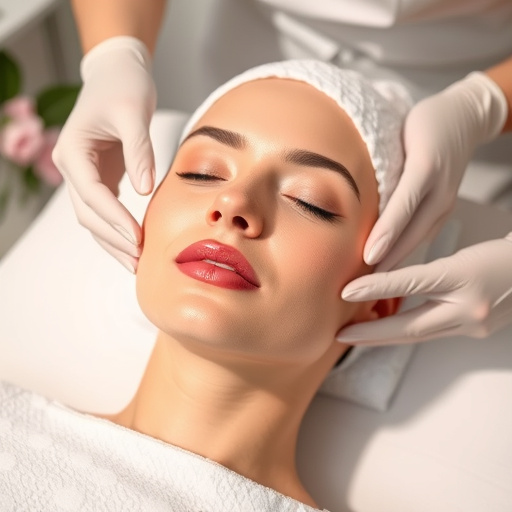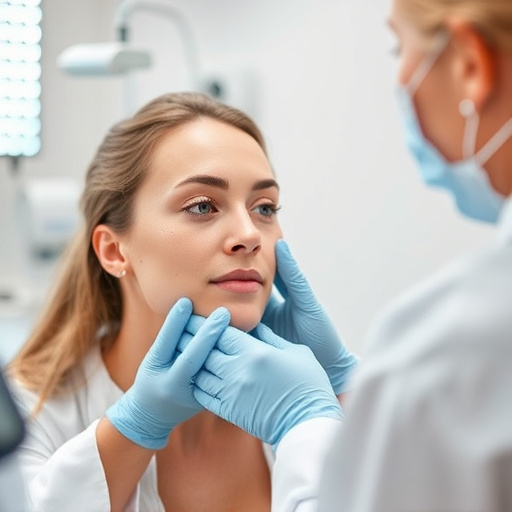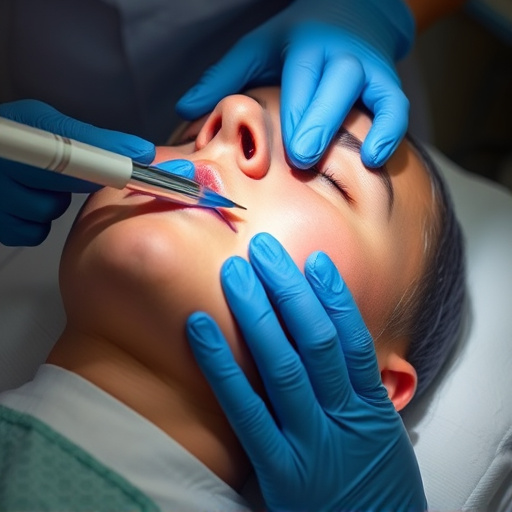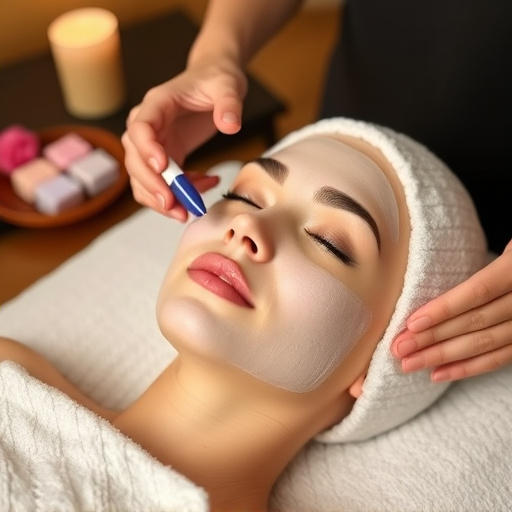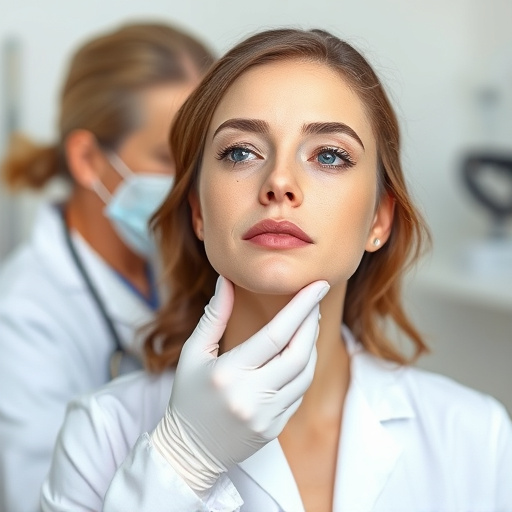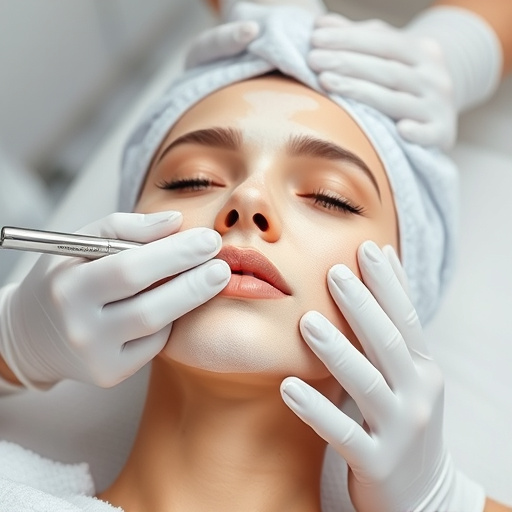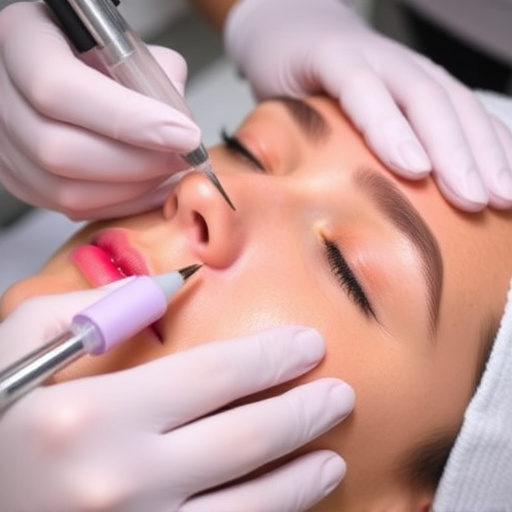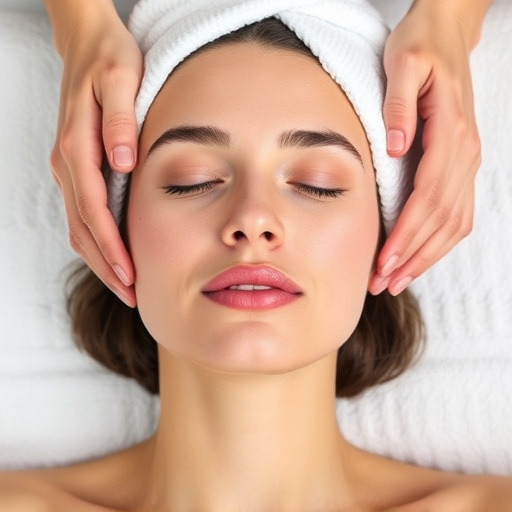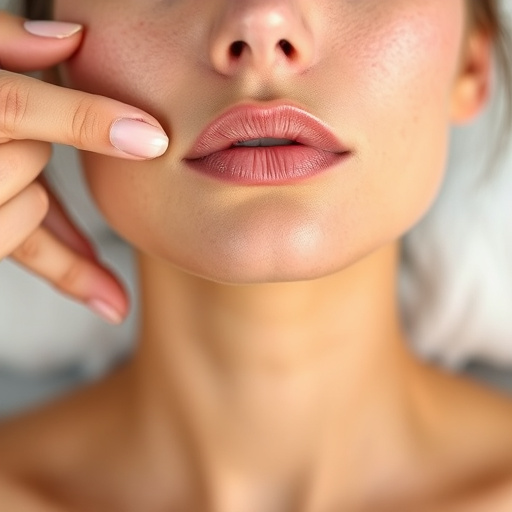Laser eyebrow hair removal offers a permanent solution for smooth, hair-free brows, reducing reliance on temporary methods like waxing or threading. Multiple sessions are typically required, but modern techniques minimize discomfort and side effects. Risks include skin irritation and potential changes in skin pigmentation, emphasizing the importance of consulting qualified professionals for tailored treatments and optimal results. Combining laser removal with other facial treatments can enhance outcomes for a smoother, more youthful look.
Is laser eyebrow hair removal a safe and effective solution for achieving smooth, polished brows? This comprehensive guide explores the technology behind this popular procedure, delving into its potential benefits and risks. We’ll break down safety considerations, discuss expected results, and provide insights to help you make an informed decision about this non-invasive aesthetic treatment, known as eyebrow hair removal.
- Understanding Laser Eyebrow Hair Removal Technology
- Potential Benefits and Risks: Safety Considerations
- Effectiveness and Results: What to Expect
Understanding Laser Eyebrow Hair Removal Technology
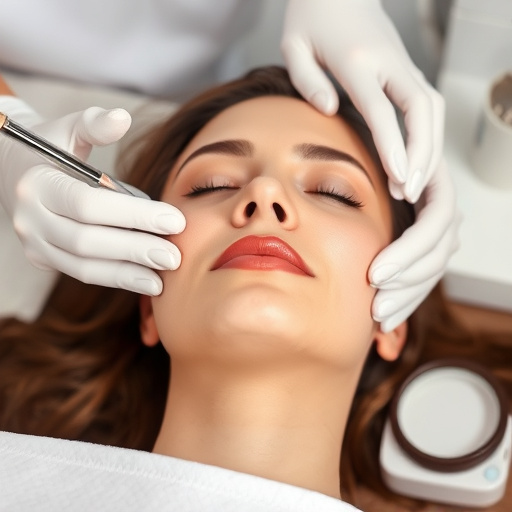
Laser eyebrow hair removal technology has evolved significantly over the years, offering a precise and effective method for achieving smooth, hair-free brows. This procedure involves using concentrated beams of light to target and destroy hair follicles, preventing future hair growth. The most common type of laser used is the diode laser, which emits light at specific wavelengths that are absorbed by melanin in the hair, heating it and damaging the follicle.
Unlike traditional methods like waxing or threading, which only remove the hair temporarily, laser eyebrow hair removal provides long-lasting results. It’s important to note that multiple sessions are usually required for optimal outcomes, as lasers target active follicles. Additionally, modern technology allows for precise adjustments to the energy level and treatment area, minimizing discomfort and potential side effects. This non-invasive procedure not only ensures effective eyebrow hair removal but also promotes healthier skin, with some treatments even contributing to skin brightening and tightening benefits.
Potential Benefits and Risks: Safety Considerations
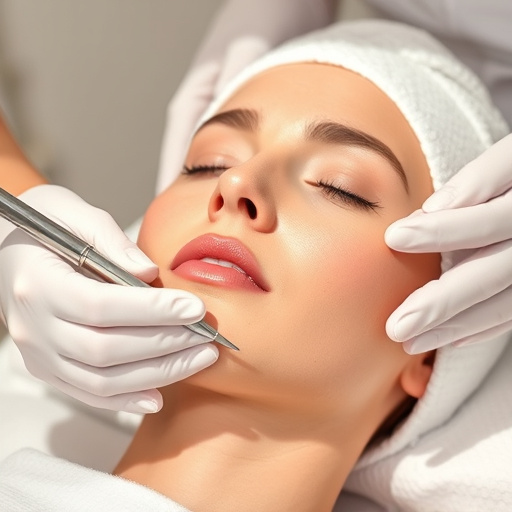
The potential benefits of laser eyebrow hair removal are significant for those seeking long-lasting solutions to unwanted facial hair. It offers a non-invasive approach to achieving smooth, hairless brows, eliminating the need for frequent waxing or threading. This method is particularly appealing for individuals with dense or uneven eyebrows, as it can help create a more uniform and aesthetically pleasing shape.
However, like any cosmetic procedure, there are risks involved. Potential side effects include skin irritation, redness, and temporary sensitivity. In rare cases, blistering or pigment changes may occur. It’s crucial to consider one’s medical history and current medications, as certain conditions and drugs can increase the risk of complications. Moreover, not all skin types respond equally well, so comprehensive consultation with a qualified professional is essential. They can determine if laser eyebrow hair removal is suitable, safe, and effective for an individual’s specific needs, ensuring optimal results without adverse effects, especially when compared to other methods like chemical peels or body contouring procedures.
Effectiveness and Results: What to Expect
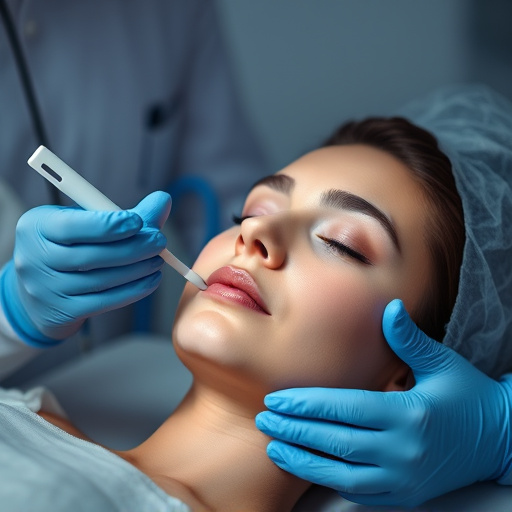
Laser eyebrow hair removal has gained popularity as a permanent solution for unwanted facial hair. Its effectiveness lies in targeting the melanin in the hair follicle, which inhibits hair growth. Most people experience significant reduction in eyebrow hair after several sessions, with some achieving nearly complete hairlessness. However, results can vary based on factors like skin and hair color, as darker hairs absorb laser energy more efficiently.
While it’s often considered a safe procedure when performed by qualified professionals, it’s not without potential side effects. Common temporary reactions include redness, swelling, and irritation at the treatment site. In rare cases, scarring or changes in skin pigmentation might occur. To maximize results and minimize risks, individuals should consult with experienced estheticians who can tailor treatments to their specific needs. Additionally, combining laser eyebrow hair removal with other facial treatments like chemical peels or anti-aging procedures can offer synergistic benefits for a smoother, more youthful complexion.
Laser eyebrow hair removal has emerged as a popular and effective method for achieving smooth, long-lasting results. By understanding the technology behind it, being aware of potential risks and benefits, and setting realistic expectations, individuals can make informed decisions about their facial hair. While it may not be suitable for everyone, many people have experienced significant reduction in eyebrow hair growth, leading to a more refined and natural-looking appearance. As with any procedure, consulting with a qualified professional is essential to ensure safety and optimal outcomes for eyebrow hair removal.



